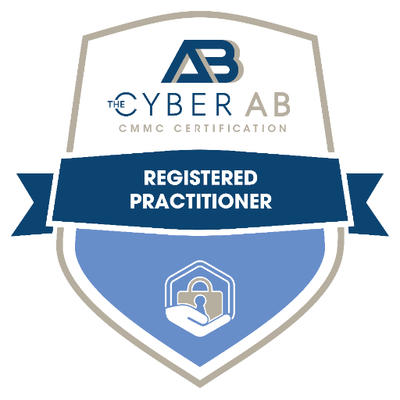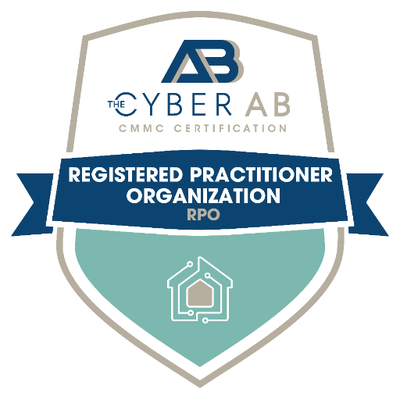As CEOs and CFOs, understanding cybersecurity frameworks is crucial for ensuring the protection of your organization’s assets and maintaining compliance with regulatory requirements. One such framework that demands your attention is the National Institute of Standards and Technology (NIST) Cybersecurity Framework (CSF) 2.0. Here’s what you need to know about this updated framework and its implications for your organization.
The All-Encompassing Governance Layer
NIST CSF 2.0 introduces an all-encompassing governance layer that places a strong emphasis on organizational leadership and commitment to cybersecurity. This governance layer serves as a strategic framework, embedding cybersecurity considerations into every level of decision-making within the organization. Unlike traditional, more tactical cybersecurity frameworks, NIST CSF 2.0 offers a holistic approach, guiding organizations to integrate cybersecurity into their broader governance structures. This strategic roadmap ensures that cybersecurity is not treated as a standalone function but as an integral part of overall business strategy.
One of the key advantages of NIST CSF 2.0 is its flexibility. Unlike frameworks that require rigid certification audits, NIST CSF 2.0 allows organizations to tailor the framework to their specific needs and objectives. This flexibility enables businesses to implement cybersecurity best practices that align with their unique risk appetite and business goals. However, this flexibility should not lead to complacency. While the framework’s adaptability allows for a more customized approach, it is crucial for organizations to develop a comprehensive strategic plan. This plan should incorporate both strategic and tactical elements, ensuring that cybersecurity measures are not only aligned with overarching business objectives but also address specific, actionable steps.
In practice, integrating NIST CSF 2.0 with other frameworks, such as ISO 27001, can lead to significant cost savings and efficiency. For instance, organizations that are already compliant with NIST CSF may find that they are 70% of the way toward ISO 27001 compliance. The latest NIST CSF 2.0, with its added governance layer, further aligns with ISO 27001, potentially reducing the effort and cost required to achieve compliance with both frameworks. Omnistruct offers a discount on multiple framework integrations, highlighting the financial benefits of adopting a strategic approach to cybersecurity.
By starting with a strategic plan and layering tactical measures, organizations can avoid the pitfalls of pursuing separate certifications, which often results in higher costs and fragmented efforts. This integrated approach not only streamlines compliance efforts but also enhances overall security posture, ensuring that organizations are well-prepared to secure contracts and meet regulatory requirements efficiently.
Convergence with ISO 27001:2022
The convergence of NIST CSF 2.0 with ISO 27001:2022 marks a pivotal shift in the cybersecurity landscape, reflecting a harmonization of two highly regarded frameworks. This alignment highlights the complementary nature of these frameworks and their shared objective of bolstering cybersecurity governance and resilience. By integrating NIST CSF 2.0 with ISO 27001:2022, organizations can benefit from a unified approach to managing cybersecurity risks, enhancing both their strategic and tactical defenses.
For CEOs and CFOs, this convergence presents a unique opportunity to optimize their organization’s cybersecurity posture while also streamlining compliance efforts. The alignment between NIST CSF 2.0 and ISO 27001:2022 allows executives to leverage the strengths of both frameworks, creating a comprehensive cybersecurity management system that addresses a broad spectrum of risks and regulatory requirements. This integrated approach not only strengthens the organization’s defenses but also ensures that it meets both domestic and international standards, providing a competitive edge in global markets.
Financially, this convergence offers significant benefits to executives. By aligning NIST CSF 2.0 with ISO 27001:2022, organizations can achieve substantial cost savings through streamlined compliance processes. Instead of pursuing separate certifications, which can be both time-consuming and costly, an integrated approach reduces redundancy and minimizes the resources required for compliance. For instance, companies that are already adhering to NIST CSF may find that they are well on their way to meeting ISO 27001 standards, potentially saving up to 70% of the effort and cost associated with achieving ISO 27001 compliance. Moreover, by utilizing solutions like Omnistruct’s 25% discount on multiple framework integrations, organizations can further reduce expenses while enhancing their overall security posture. This strategic approach not only helps in managing compliance more efficiently but also supports long-term financial health by avoiding the high costs of fragmented or redundant compliance efforts.
Emphasis on Governance, Risk, and Compliance
NIST CSF 2.0 goes beyond traditional cybersecurity frameworks by considering the overarching governance, risk, and continual compliance (GRC) component. Unlike frameworks that are solely focused on technical controls (like CIS Controls, PCI DSS, CMMC, or ISO 27001:2013), NIST CSF 2.0 emphasizes a holistic approach to cybersecurity governance, encompassing organizational policies, procedures, and culture.
Importantly, NIST CSF 2.0 is not privacy-focused, making it well-suited for organizations that require a comprehensive cybersecurity framework without the emphasis on privacy considerations. This flexibility is particularly advantageous for organizations operating in highly regulated industries where privacy requirements may vary.
Impact on Revenue
Cybersecurity has become a critical factor in securing revenue-generating business opportunities. Many contracts now include requirements for adherence to a recognized cybersecurity framework, with NIST CSF being one of the most widely recognized.
For executives, compliance with NIST CSF 2.0 can be a significant sales enabler, providing assurance to customers and partners that your organization takes cybersecurity seriously and has implemented robust controls to protect their data and assets. Conversely, non-compliance can be a sales stopper, potentially costing your organization valuable business opportunities.
It’s important to note that effective cybersecurity often requires a combination of technical controls, policies, procedures, and organizational measures to address the full spectrum of cyber risks. NIST CSF 2.0 represents a significant evolution in cybersecurity governance, offering CEOs and CFOs a baseline from which all tactical frameworks can be determined and at a more cost efficient standpoint for the future. By leveraging the strategic guidance provided by NIST CSF 2.0, organizations can strengthen their cybersecurity posture, mitigate risks, and seize opportunities for business growth and success.





